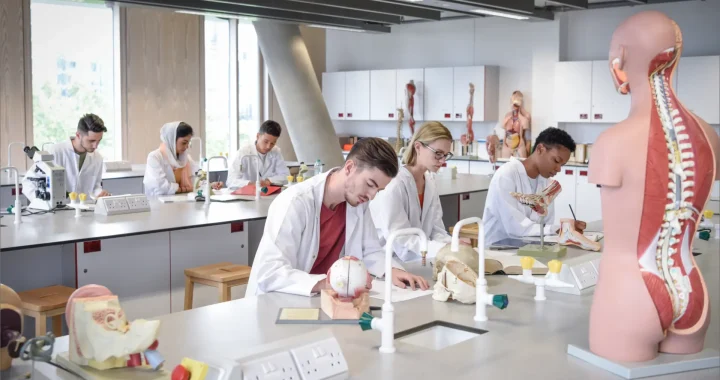The Art of Healing: A Comprehensive Look at Modern Treatments and Approaches

In the world of healthcare, “treatment” is a term that encompasses a vast array of methods, interventions, and strategies designed to restore health, alleviate symptoms, and improve quality of life. As medical science advances, the landscape of treatment options expands, incorporating innovative technologies, holistic approaches, and a deep understanding of the human body. In this article, we explore the multifaceted nature of treatment, discussing traditional methods, cutting-edge therapies, and the future of healing.
Traditional Treatment: The Pillars of Medicine
For centuries, treatment has been synonymous with the tried-and-tested practices of conventional medicine. From the early days of herbal remedies to the development of vaccines, traditional treatments have formed the backbone of healthcare. These methods are based on rigorous scientific research, a deep understanding of anatomy and physiology, and a commitment to improving patient outcomes.
One of the most prevalent traditional treatments is pharmacological therapy, where medication plays a central role in the management of diseases. Antibiotics, antivirals, analgesics, and anti-inflammatory drugs have saved millions of lives. While these medications have proven indispensable, they are often used in conjunction with other treatments to address the underlying cause of illness, not just the symptoms. For example, cancer patients may undergo chemotherapy or radiation therapy alongside pharmacological interventions to target tumors.
Surgical intervention is another cornerstone of traditional treatment. From the relatively simple removal of an infected appendix to the complexity of organ transplants, surgery remains a critical tool for saving lives. Modern surgical techniques have evolved significantly, incorporating minimally invasive approaches that reduce recovery time and improve patient outcomes. Whether it is a heart bypass surgery or a knee replacement, surgery continues to be a pivotal aspect of medical practice.
Emerging Therapies: The Evolution of Modern Medicine
As we move further into the 21st century, new treatment modalities are reshaping the way we approach illness. Biotechnology, gene therapy, and regenerative medicine are just a few of the innovations that have made profound impacts on patient care. These therapies focus on addressing the root cause of diseases, often at the genetic or cellular level, rather than merely managing symptoms.
Gene therapy, for instance, holds promise for treating genetic disorders such as cystic fibrosis and hemophilia. By inserting, altering, or removing genes within a patient’s cells, scientists hope to correct the underlying genetic mutations responsible for disease. Although still in its infancy, gene therapy has already shown success in clinical trials, and its potential to transform the treatment landscape is immense.
Another groundbreaking advancement is stem cell therapy, which leverages the body’s natural ability to repair itself. Stem cells can develop into various types of cells, enabling the regeneration of damaged tissues and organs. For patients with spinal cord injuries, degenerative diseases like Parkinson’s, or even those with severe heart damage, stem cell treatments offer hope where once there was little.
Immunotherapy is another innovation that is redefining the treatment of cancer. Unlike traditional treatments, which directly target the cancerous tumor, immunotherapy works by enhancing the body’s immune system to recognize and destroy cancer cells. This treatment is already proving effective in treating certain cancers like melanoma and lung cancer, and research continues to expand its applications.
Holistic Approaches: Embracing the Mind-Body Connection
While conventional medicine continues to dominate the healthcare landscape, there is an increasing recognition of the importance of holistic treatments that address not just the body but also the mind and spirit. These approaches emphasize the interconnectedness of physical health, emotional well-being, and mental clarity, offering patients a more comprehensive path to healing.
One of the most well-known holistic practices is acupuncture, a key component of Traditional Chinese Medicine (TCM). By inserting thin needles into specific points on the body, acupuncturists aim to restore balance and harmony within the body’s energy pathways, or meridians. Studies have shown that acupuncture can alleviate pain, reduce inflammation, and improve overall health, particularly in conditions like chronic pain, migraines, and even anxiety.
Chiropractic care, another holistic treatment, focuses on the alignment of the spine and its impact on the nervous system. Through spinal adjustments, chiropractors seek to restore proper function to the body, relieving pain and enhancing mobility. For many patients, chiropractic care provides relief from musculoskeletal issues such as back pain, neck pain, and headaches.
Mind-body therapies like meditation, yoga, and mindfulness have also gained widespread acceptance. These practices not only improve flexibility and strength but also reduce stress and promote emotional healing. The growing body of research supporting the mental and physical benefits of these practices has led many healthcare providers to incorporate them into their treatment protocols.
Personalized Medicine: Tailoring Treatments to the Individual
In the past, treatment often followed a one-size-fits-all approach, where doctors prescribed the same medications or interventions to all patients with the same condition. However, with the advent of personalized medicine, treatments are becoming more tailored to the unique genetic makeup and lifestyle factors of each individual. This approach takes into account a person’s genetic profile, environment, and personal health history to develop a treatment plan that is most likely to be effective for them.
Genomic testing, which analyzes a person’s DNA, is a key tool in personalized medicine. It allows doctors to predict how a patient will respond to certain medications, identify genetic risks for various diseases, and even select the most appropriate treatment based on a person’s genetic predisposition. This can be particularly helpful in oncology, where the genetic makeup of both the patient and the tumor can inform treatment decisions, improving outcomes and minimizing side effects.
Pharmacogenomics, the study of how genes affect a person’s response to drugs, is also revolutionizing the way treatments are prescribed. This field has the potential to eliminate the trial-and-error approach often used in prescribing medications, leading to faster, more effective results.
The Future of Treatment: A Holistic, Integrated Approach
Looking ahead, the future of treatment seems poised to blend the best aspects of traditional, modern, and holistic therapies. We can expect to see a more integrative approach to healthcare, where doctors and patients work together to combine the latest medical technologies with complementary treatments, creating a comprehensive, personalized treatment plan.
The future will likely be shaped by innovations such as artificial intelligence (AI) in medicine, which is already playing a role in diagnostics, treatment planning, and even robotic surgeries. AI’s ability to analyze vast amounts of data and learn from patient outcomes could revolutionize treatment strategies, allowing for earlier detection of diseases and more precise interventions.
Additionally, advances in telemedicine will continue to make treatment more accessible, especially in remote or underserved areas. With the rise of digital health platforms, patients will be able to access expert care from the comfort of their homes, expanding the reach of medical treatments globally.
In conclusion, the landscape of treatment is evolving rapidly, driven by both technological advancements and a deeper understanding of the human body. Whether through traditional methods, innovative therapies, or holistic practices, the goal remains the same: to promote healing and improve quality of life. As we look to the future, the integration of various treatment modalities will likely become the standard, offering patients a more personalized, effective, and comprehensive approach to their health.

 Get Urgent Care Ear Infection Treatment Today
Get Urgent Care Ear Infection Treatment Today  A Face Aesthetic Treatments Say Goodbye To Acne Scars And Wrinkles
A Face Aesthetic Treatments Say Goodbye To Acne Scars And Wrinkles  Advanced Treatments In Psychiatry: An Overview
Advanced Treatments In Psychiatry: An Overview  Attention deficit hyperactivity disorder Medications and Academics
Attention deficit hyperactivity disorder Medications and Academics  About Laser Acne Remedy
About Laser Acne Remedy  Cancer Treatment Abroad – Scouting for reasonable Solutions
Cancer Treatment Abroad – Scouting for reasonable Solutions  The Role of Supplements in Modern Health: A Balanced Perspective
The Role of Supplements in Modern Health: A Balanced Perspective  Which delta 9 gummies are known for their potency?
Which delta 9 gummies are known for their potency?  The Art of Healing: A Comprehensive Look at Modern Treatments and Approaches
The Art of Healing: A Comprehensive Look at Modern Treatments and Approaches  The Evolution of Medical Science: From Ancient Remedies to Modern Breakthroughs
The Evolution of Medical Science: From Ancient Remedies to Modern Breakthroughs